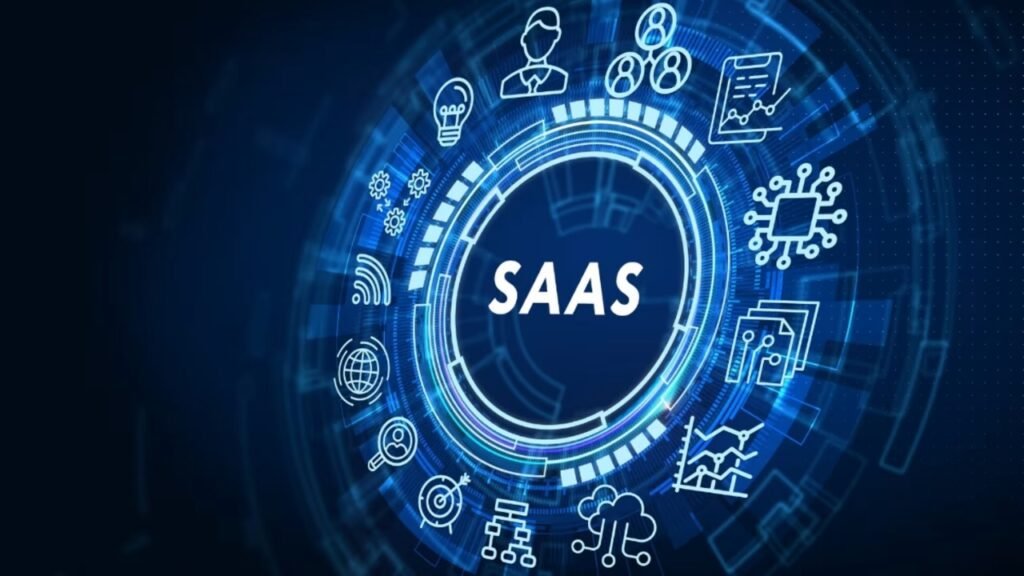Welcome to the Age of Smart Software
Remember when B2B software was mostly spreadsheets and clunky interfaces? Fast forward to 2025, and we’re living in an era where Artificial Intelligence (AI), seamless integrations, and user-centric design are the new normal. SaaS (Software as a Service) isn’t just a tool anymore it’s a strategy, a competitive advantage, and in many cases, a full-blown transformation engine.
In fact, Gartner predicts that by 2025, over 85% of SaaS applications will be infused with AI, dramatically changing how businesses operate, sell, and scale.
AI Takes Center Stage in B2B SaaS
Artificial Intelligence is no longer optional it’s essential. Companies are embedding AI into SaaS products to offer:
Predictive analytics
Intelligent automation
Personalized customer experiences
Smart decision-making tools
Case in Point:
Salesforce’s Einstein AI now powers everything from lead scoring to automated email follow-ups. Their clients report 43% more closed deals and 38% higher customer satisfaction, according to Salesforce’s 2024 report.
How Businesses Are Benefiting:
Marketing: AI tools like HubSpot’s AI assistant suggest optimal content strategies based on past campaign performance.
Finance: Platforms such as Kyriba are using AI for cash forecasting, helping CFOs make faster, more informed decisions.
Customer Support: Zendesk leverages AI to route tickets and provide agents with suggested responses, cutting response times in half.
Digital Transformation is No Longer a Project, It’s a Mindset
Digital transformation used to be a goal. In 2025, it’s the baseline. B2B SaaS companies are helping enterprises rethink entire workflows, eliminate silos, and move faster than ever before.
Key Drivers:
Remote & hybrid workforces
Cloud-native operations
Pressure for real-time data visibility
Customer demand for personalized digital experiences
Manufacturing companies that traditionally relied on legacy ERP systems are now embracing cloud-based SaaS platforms like Oracle NetSuite or Infor CloudSuite, enabling real-time inventory tracking and predictive maintenance powered by IoT and AI.
Software Development Is Going Low-Code, No-Code, and AI-Powered
The SaaS development landscape is evolving at warp speed.
What’s Trending in 2025:
AI-assisted development tools like GitHub Copilot and AWS CodeWhisperer are accelerating time-to-market.
Low-code/no-code platforms like OutSystems, Mendix, and Zapier are empowering non-technical teams to build apps.
Composable architecture allows businesses to plug-and-play best-of-breed tools instead of relying on monoliths.
“In 2025, every business is a software business, whether they realize it or not.” – Satya Nadella, CEO of Microsoft
Why It Matters:
Faster deployment cycles
Lower development costs
Reduced reliance on overburdened IT teams
Application Modernization: Say Goodbye to Legacy Tech
Legacy systems are out. Modern SaaS demands agility, scalability, and seamless integration.
Top Modernization Tactics in 2025:
Microservices architecture
API-first development
Containerization & Kubernetes
Serverless computing
Why It Works:
Improves deployment speed
Enhances system reliability
Enables real-time updates and fixes
Data is the New Oil But It Needs Refining
With AI at the helm, data becomes exponentially more powerful but only when it’s clean, connected, and contextual.
Key Data Trends in B2B SaaS:
Real-time analytics
Unified customer data platforms (CDPs)
Privacy-centric data governance
AI-generated insights from messy datasets
Stat to Know:
According to McKinsey, companies that make data-driven decisions are 23 times more likely to acquire customers and 19 times more likely to be profitable.
Tool Highlight:
Platforms like Snowflake and Looker are leading the charge by making advanced analytics accessible across departments.
Industry-Specific SaaS (Vertical SaaS) Is Exploding
In 2025, generic solutions are being replaced by tailored platforms that cater to unique industry needs.
Examples of Vertical SaaS Growth:
Healthcare: Tools like CureMD and SimplePractice streamline EHRs and telehealth workflows.
Construction: Platforms like Procore offer project tracking, contractor collaboration, and financial management—all in one.
Retail: Brightpearl and Shopify Plus offer backend inventory, order management, and omnichannel retailing.
“Niche solutions are winning in SaaS because they solve real problems deeply, not broadly.” – Jason Lemkin, SaaStr
Cybersecurity and Compliance Are Core Product Features
With increased data usage comes increased responsibility. In 2025, cybersecurity isn’t an add-on it’s a built-in promise.
Critical Features Now Expected:
End-to-end encryption
Zero Trust frameworks
AI-powered threat detection
Automated compliance audits (GDPR, HIPAA, SOC 2)
Actionable Takeaways for 2025
If you’re leading a SaaS company or partnering with one here’s how to stay ahead of the curve:
Invest in AI-native features, not just AI add-ons.
Modernize legacy systems to microservices or serverless models.
Empower teams with low-code tools and AI-powered dev assistants.
Build or buy SaaS platforms that specialize in your vertical.
Prioritize data integrity and privacy compliance from day one.
What This Means for Your Business
The B2B SaaS landscape in 2025 is agile, intelligent, and built to scale. Whether you’re a startup building your first product or an enterprise modernizing legacy workflows, these trends present an opportunity to drive impact faster than ever before.
Are You Future-Ready?
As the SaaS world continues to evolve, the question isn’t whether you should adapt but how fast you can. Which trend excites you the most, and how is your business preparing for it?




